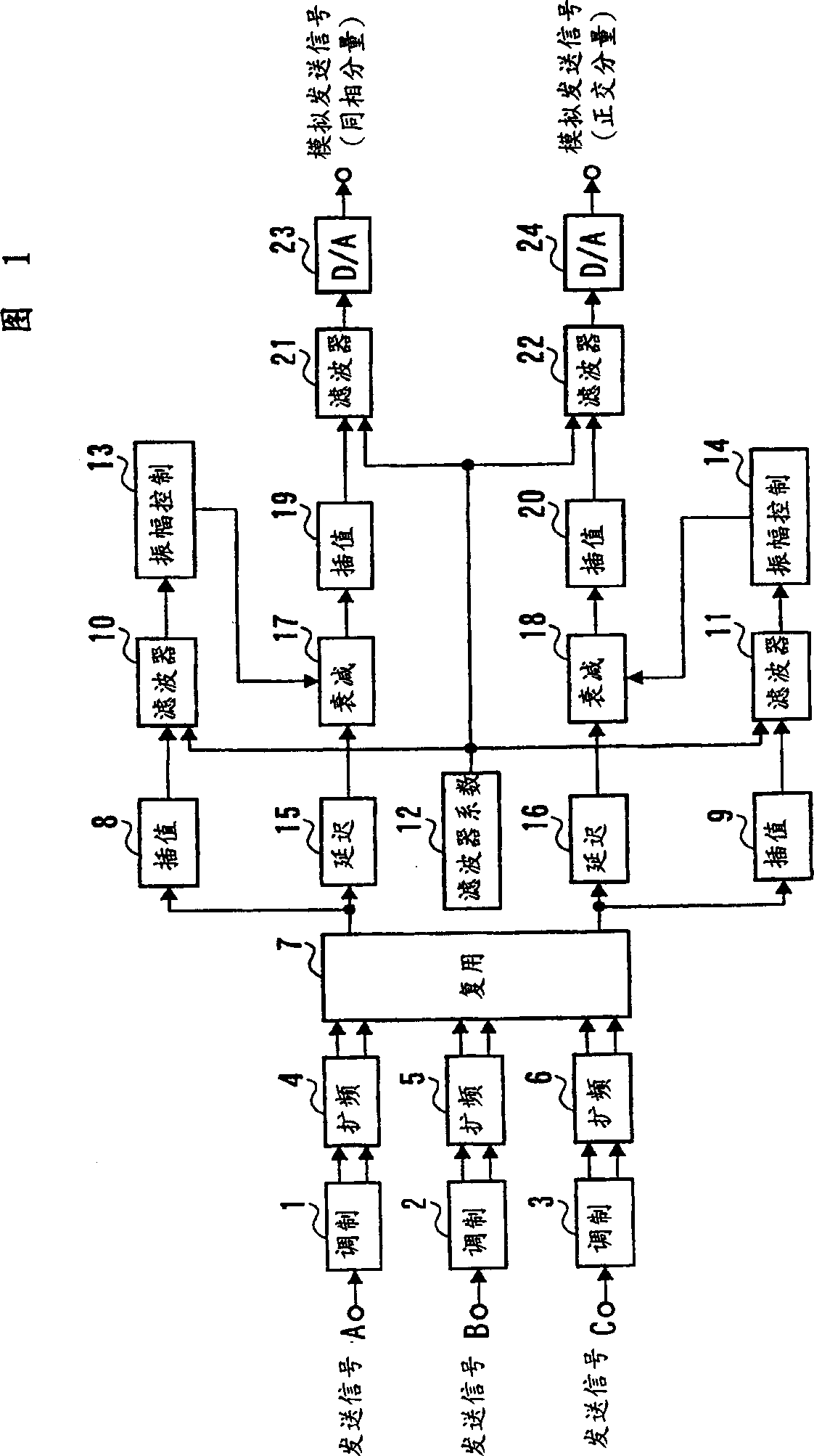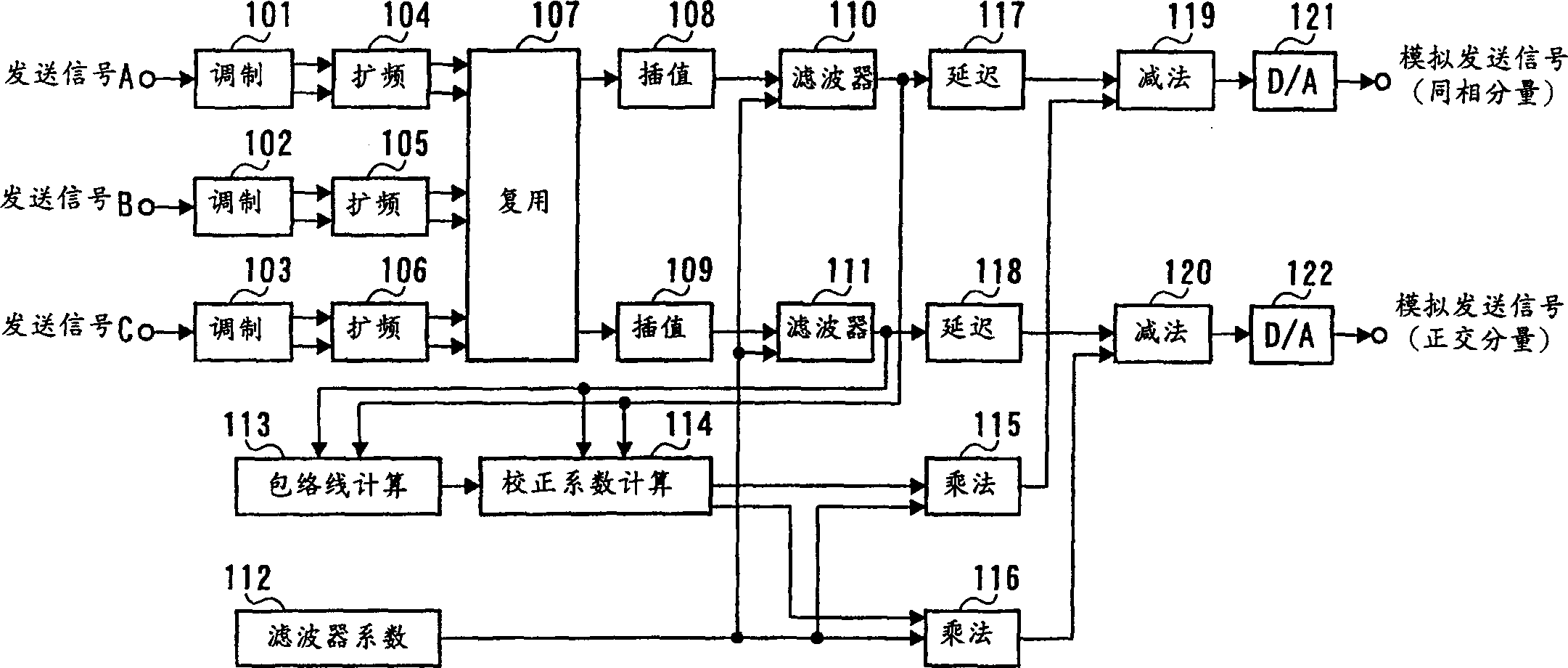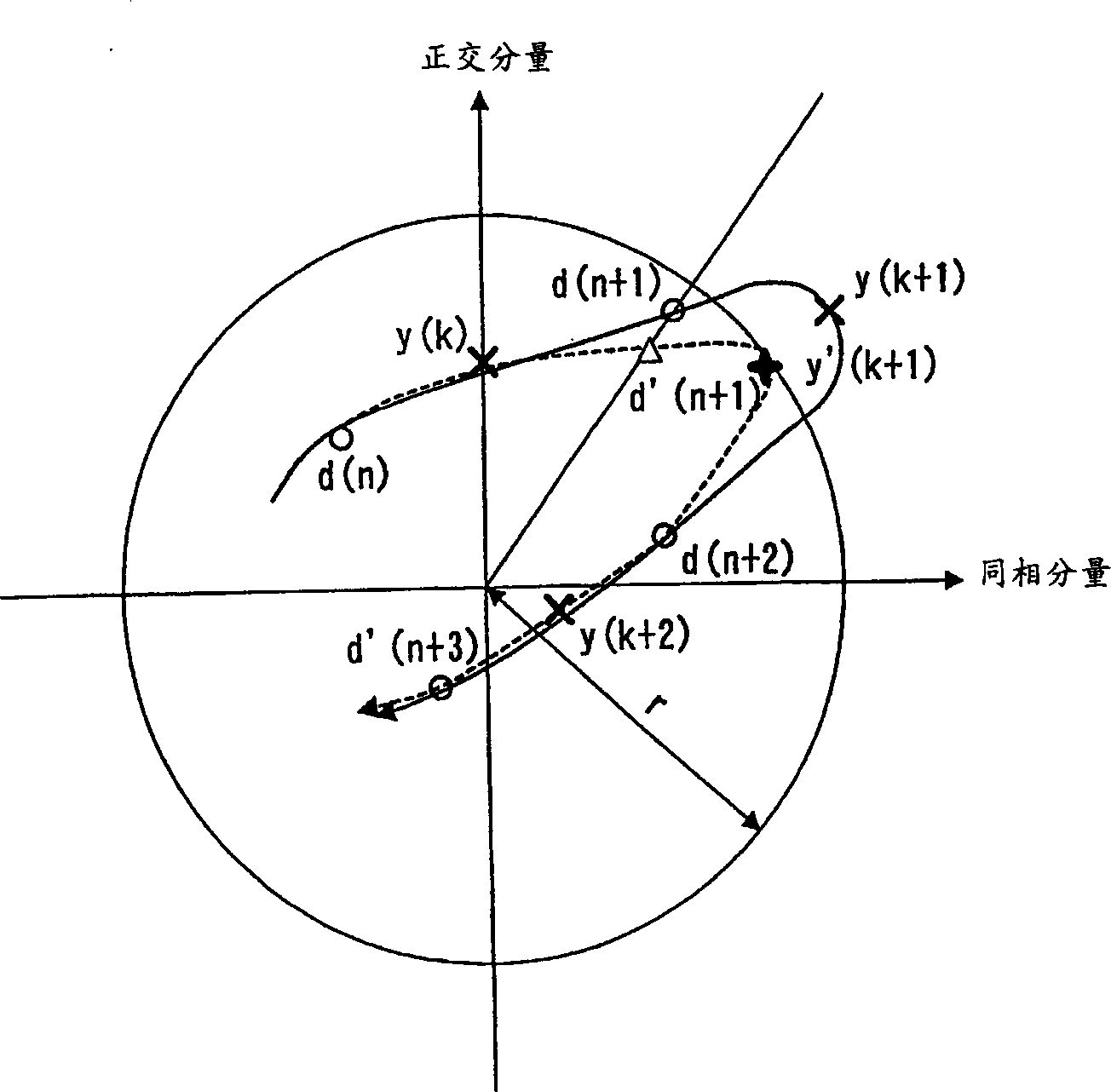Base station device and method for suppressing peak current
A base station and correction value technology, applied in the direction of gain control, amplification control, modulation carrier system, etc., can solve the problems of circuit scale increase and power consumption increase
- Summary
- Abstract
- Description
- Claims
- Application Information
AI Technical Summary
Problems solved by technology
Method used
Image
Examples
Embodiment 1
[0031] figure 2 It is a structural block diagram of the base station in Embodiment 1 of the present invention.
[0032] exist figure 2 Among them, the modulation unit 101 performs QPSK modulation on the transmission signal A to be transmitted to the user A, and outputs the in-phase component and the quadrature component of the modulated signal to the spreading unit 104 . Similarly, modulation unit 102 performs QPSK modulation on transmission signal B to be transmitted to user B, and outputs the in-phase component and quadrature component of the modulated signal to spreading unit 105 . The modulation unit 103 performs QPSK modulation on the transmission signal C to be transmitted to the user C, and outputs the in-phase component and the quadrature component of the modulated signal to the spreading unit 106 .
[0033] The spreading unit 104 multiplies the QPSK-modulated transmission signal A by a unique spreading code to perform spreading processing, and outputs the spread sig...
Embodiment 2
[0065] Figure 4 It is a structural block diagram of the base station in Embodiment 2 of the present invention. exist Figure 4 in, right with figure 2 The same structure is appended with figure 2 The same reference numerals are used, and descriptions thereof are omitted. Figure 4 The base station shown uses a pair of figure 2 The illustrated base station has a structure in which multiplication units 201, 201 and averaging units 203, 204 are added.
[0066] When the amplitude of the transmission signal calculated by the envelope calculation unit 113 exceeds the allowable amplitude value, the correction coefficient calculation unit 114 calculates the difference in amplitude of the transmission signal before and after the time, and compares the absolute value of the difference with a preset threshold value. Size comparison, when the absolute value of the difference does not exceed the threshold value, calculate the correction coefficient for each transmission signal, outpu...
PUM
 Login to View More
Login to View More Abstract
Description
Claims
Application Information
 Login to View More
Login to View More - R&D
- Intellectual Property
- Life Sciences
- Materials
- Tech Scout
- Unparalleled Data Quality
- Higher Quality Content
- 60% Fewer Hallucinations
Browse by: Latest US Patents, China's latest patents, Technical Efficacy Thesaurus, Application Domain, Technology Topic, Popular Technical Reports.
© 2025 PatSnap. All rights reserved.Legal|Privacy policy|Modern Slavery Act Transparency Statement|Sitemap|About US| Contact US: help@patsnap.com



